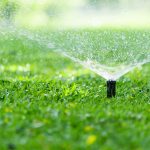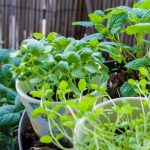While hummingbird feeders are a great supplemental source of nectar, a native bounty of blooms means more food options.
Given the choice of flower nectar or sugar water, the best choice for our hummingbird friends is always a natural food source. Of course, hummingbird feeders are a great supplemental source of nectar for your local hummingbirds, and can help them through times when there aren’t as many blooming flowers available nearby.
With that in mind, here are some seasonal charts of blooming flowers to provide nature’s bounty for them year-round.
Now, you’ll probably notice there is one season missing. That’s because most hummingbirds in our area, including black-chinned, broad-tailed, ruby-throated and rufous, spend winter in Central or South America.
*Plant species denoted with an asterisk are WaterSaver Coupon eligible.
|
|
|
Design
Since hummingbirds tend to be quite territorial, it may be necessary to replicate small multi-season beds within a longer, larger bed or throughout your landscape. For example, you may wish to plant 5-7 multi-seasonal plants in small beds, adjacent to one another, within a long rectangular beds or use a large oval bed that is divided with paths into quarters or fifths.
Maintenance
After the initial planting, you must water to establish your hummingbird food source. Frequent, but light watering is always paramount. Water 3-6 days a week for 3-6 weeks. Learn more about watering techniques in this video.
After the establishment phase, bimonthly watering is sufficient. Certainly, no more than once a week is necessary. Always add mulch or a mulch/compost mix to your beds in May and September.
Yes, weeding will be necessary, but only every couple of weeks. You can spare a half-hour every two weeks to be outside in the fresh air and sunshine, right?




